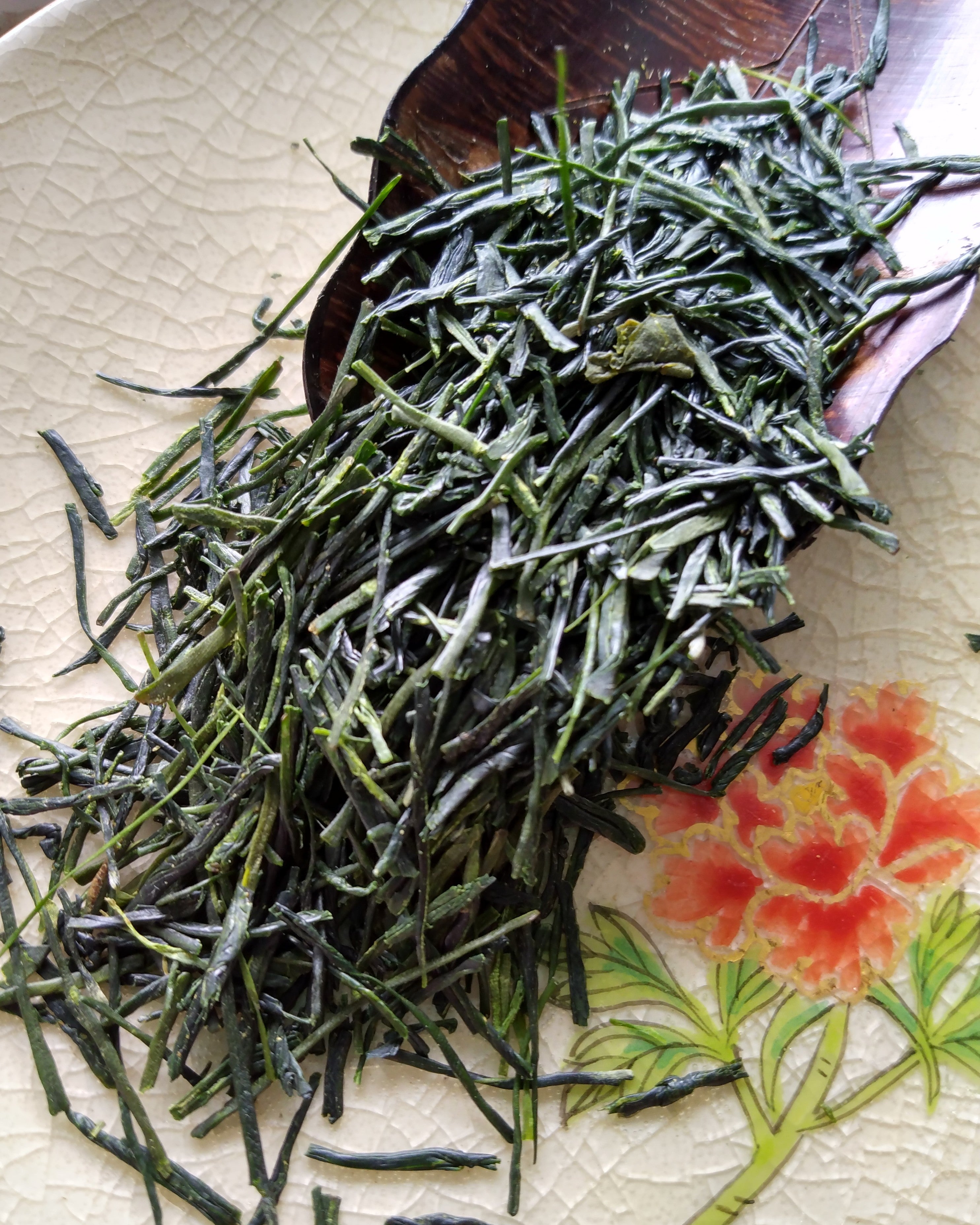Description
Obori-Soma-yaki has been made in the region of Namie Village in current Fukushima Prefecture for some 300+ years. In the mid-late 20th century, their "double-wall" construction tea wares were a very popular domestic and export (especially to the U.S.) item. The double-wall construction serves as a good inner insulator to keep the contents warm, and an outer insulator for the hands when holding hot liquids. The clay is a locally mined blue porcelain stone, and the Celadon glaze creates a crackle pattern in firing. Obori-Soma wares are often decorated with a "hashirigoma" (running horse), many times painted in gold. This goes back to a Ninsei painting of the regions famous horse festivals and is also a symbol of good fortune. The heart-shaped cut-outs are actually plover birds, gliding over the waves. These are some of the distinctive features of Obori-Soma-yaki. H. 3.25"(8.25cm) x Dia. 3"(7.5cm). 268 grams. Volume 165ml(5.625oz). Features gold hashirigoma (running horse) on front of cup.
Unfortunately, all of the 25 Soma kilns were shut down after the Great Tohoku Earthquake and Tsunami hit the Fukushima coast line creating the nuclear disaster at the nearby Daiichi Nuclear Power Plant. Recently, a few of the kilns have re-opened further inland in areas like Nihonmatsu, Aizu, Koriyama, and Minami-Soma. Their resiliency and determination will hopefully keep the Obori-Soma pottery tradition alive for future generations.
The Thiel Family has graciously allowed me to select a number of items from their parents’ extensive private collection of Japanese and Japanese-inspired crafts to offer here. We are offering them at great values so that they may find new loving homes, and ALL profits are being donated to Midori-sensei’s long-term care fund. Below is some brief information on Philip Thiel and Midori Kono Thiel.
Philip Thiel and Midori Kono Thiel were a decades-long dynamic duo of support and contributions to the Art, Architecture, and Cultural communities of the greater Seattle area and beyond. Their contributions are far too numerous to list here; but they were, to say the least, immense, generous, and sure to leave a lasting legacy. They were also passionate collectors of Japanese arts and crafts; including textiles, ceramics, architectural pieces, wood, lacquer ware, paintings, prints, folk toys, and reference books on all of the above.
Midori Kono Thiel (1933 -) has long been widely recognized for her artistic achievements, her teaching, and her cultural contributions to the Japanese art and culture communities of the Pacific Northwest. After completing her MA in Painting at UC Berkeley, she went to Japan on a UC Traveling Fellowship to study woodblock printing with well-known hanga artists Hiratsuka Un’ichi and Hagiwara Hideo. Over the years, she has studied with numerous Japanese artists in Japan, and at workshops in the U.S. by visiting Japanese artists, in the fields of Sumi and Nihonga painting, calligraphy, print making, weaving, dyeing, music (koto and shamisen), Noh and Kyogen performance, and Nihon Buyo dancing. She had become so well-accomplished in several of these areas that she has received numerous awards in the U.S. and in Japan for her artwork, and she has taught Japanese arts and culture to a variety of students in the region from young children, to university students, to senior adults.
Midori-sensei’s contributions to the cultural community of Seattle have been recognized and awarded by the Japanese Consul General in Seattle for fostering US-Japan relations, and from the Seattle Cherry Blossom Festival for furthering the understanding of Japanese culture in the US. She was a long-time artist in residence for local schools, and for the King County and Seattle Arts Commissions. She was a long-time supporter and performer for the Seattle Japanese Garden, and for numerous cultural festivals across the region over many years. If something “Japanese” was happening, Midori-sensei was always there performing and making invaluable educational contributions.
Philip Thiel (1920-2014) had careers in Naval Architecture (teaching at MIT); as a working (“dry land”) architect at the firms of Bauhaus School architects Marcel Breuer (NY) and Walter Gropius’ The Architects’ Collaborative (Cambridge); as a professor of Architecture and Environmental Design at UC Berkeley; and as Professor Emeritus of Architecture and Urban Planning at the University of Washington, in Seattle. His deep love for the art, architecture, and culture of Japan began with meeting Japanese architect and educator Kiyoshi Seike while at The Architects’ Collaborative; and with meeting his future wife of 59 years, Midori Kono, while at UC Berkeley. This interest led several research visits to Japan, and to teaching Architecture at the Tokyo Institute of Technology and at the Sapporo School of Design.
Although his long teaching career and published architecture books have surely impacted thousands of students from many parts of the world, he was also a community activist in the greater Seattle area. His professional expertise and interests in public spaces, environmental psychology, and the human experience of moving through built environments led him to becoming an important community advocate for park spaces and public plazas in Seattle.





